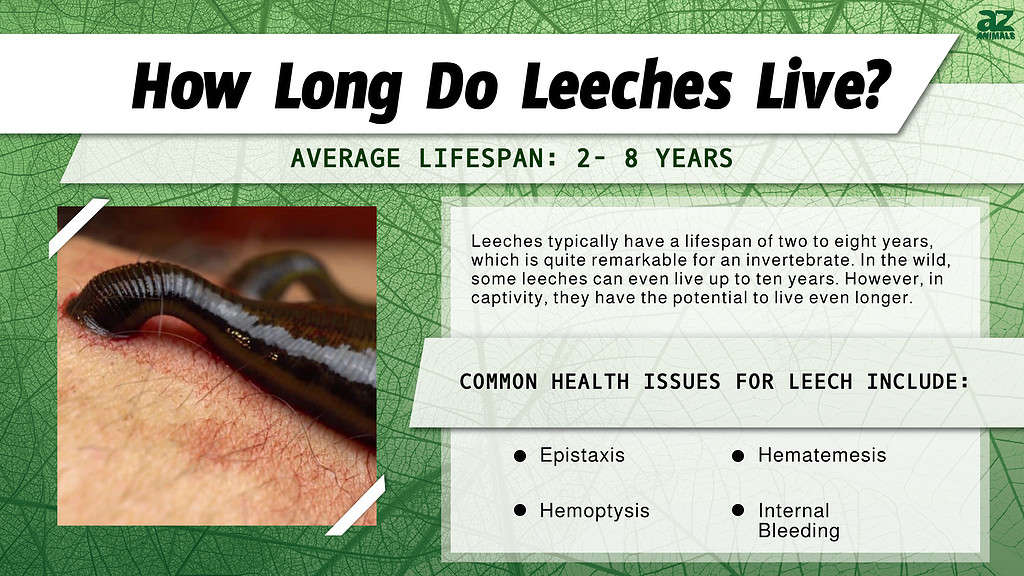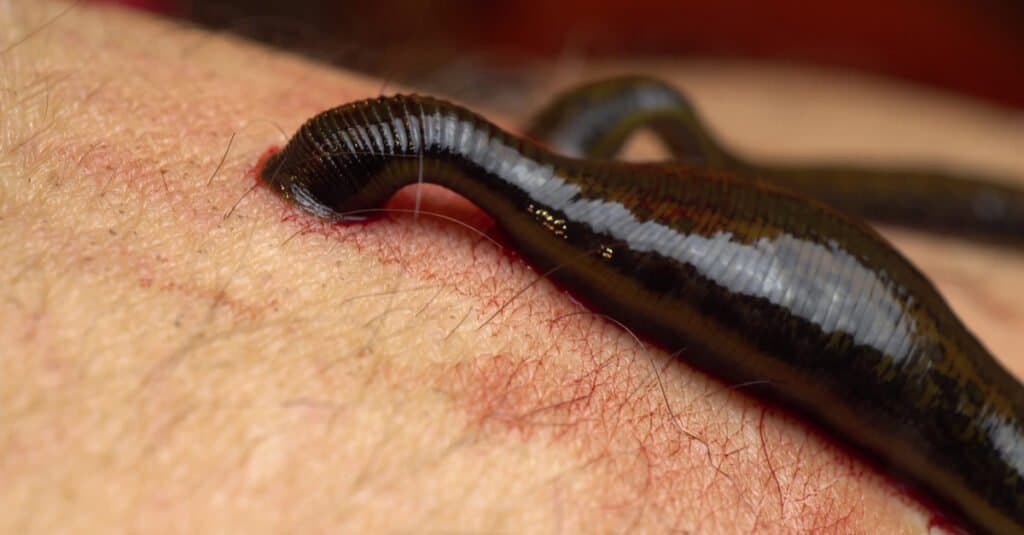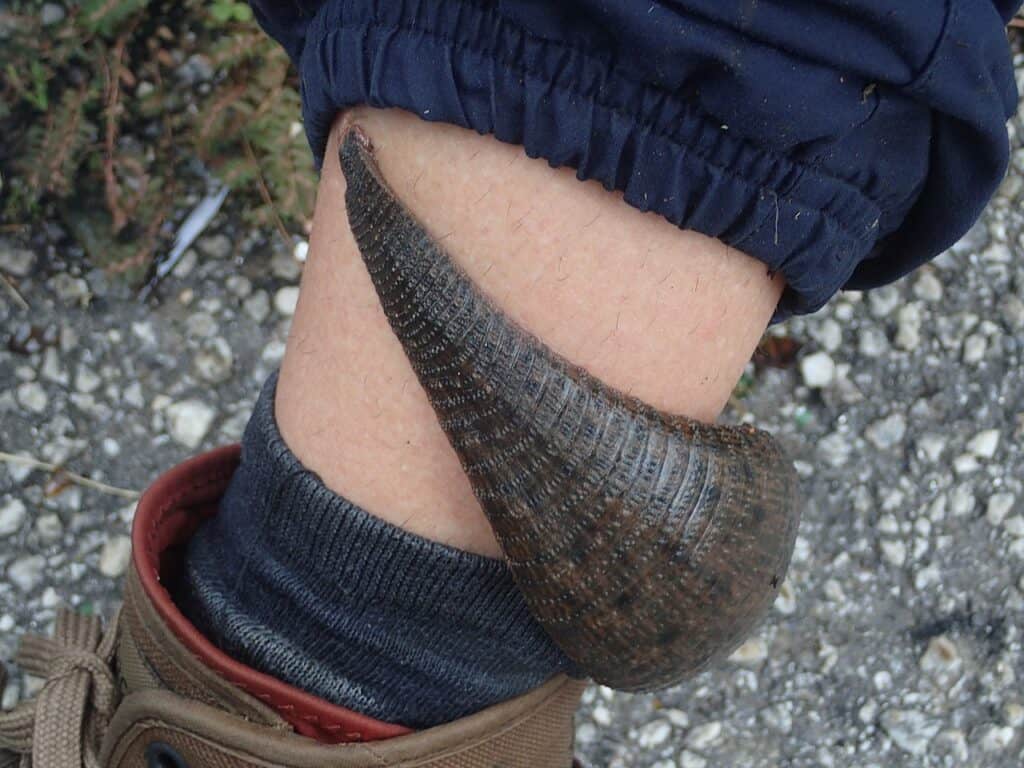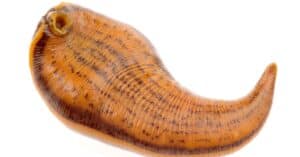
What critter frightens you the most? What creepy crawly sends shivers down your spine? Worms sure will be among the top candidates. But imagine something worm-like, sucking blood? That would be way more terrifying.
On Earth, there are various sorts of creepy creatures; some are beautiful to observe, while others are, well, frightening. A leech is one of the strangest things you can encounter in your lifetime. Even though they seem little, you get chills all over your body when you see one close to your skin.
People generally have a negative opinion on leeches and often perceive them as bloodsucking vermin. However, most avoid attacking people, and many do not rely primarily on blood for nutrition. They used to be a form of medicine, and surgeons today use medical leeches to clean sensitive tissue. But how long do leeches live? This article discusses a leech’s lifespan and other interesting facts.
How Long Do Leeches Live?

Leeches have a lifespan of two eight years.
©Vital9s/Shutterstock.com
Generally, leeches can live between two to eight years – that’s a lot of years for an invertebrate. In some cases in the wild, they can last even as long as ten years. However, they can last longer in captivity.
While most leeches live in water, some can survive in dry environments by digging mud holes. Most avoid swimming and cannot enter the water, but they can endure brief submersion. Some species hide underground in dry conditions where they can live for many months without external water.
Leech Reproduction and Development
Since leeches are hermaphrodites, there is no distinction between the sexes. They reproduce by cross-fertilization. The female leech lays her eggs in a cocoon after fertilization, with the cocoon containing one to 300 eggs. The female then fastens the cocoon to a sturdy object like a stone or shrub.
Leech pupae grow inside the cocoon, and it can take up to nine months for the young to develop inside the cocoon. Leeches are completely developed at birth and equipped to survive on their own. In two years, they reach sexual maturity.
Life Cycle of Leeches
Leeches live alone and only interact with other leeches while they are reproducing. Every leech possesses both male and female reproductive organs and they typically reproduce by entwining their bodies together. Below is a more detailed explanation of the life cycle of leeches:
Reproduction
A spermatophore, or sperm capsule, is released from a leech’s male organ and connected to the other leech. After becoming connected, the sperm leaves the spermatophore and passes through the other leech’s skin, making its way to the ovaries, and fertilizing the eggs.
Eggs
Egg-laying leeches create cocoons where they deposit their eggs. This cocoon initially encases the leech, and fertilized eggs stick to the cocoon as it falls off the leech’s body.
In some species, egg development in the cocoon is as short as a week. In others, egg development takes longer and requires more parental care.
When a suitable host is around, newborn leeches leave their caretaker’s body and feed. Then, they become completely independent after that first meal.
Juveniles
Leeches undergo the stages of development without experiencing fundamental change. In contrast to earthworms, which acquire segments as they grow, the juvenile that exits from the cocoon has the same number of sections throughout its existence. Leeches, also unlike earthworms, are unable to regain lost body parts.
They exhibit two distinct types of growth throughout the juvenile period, depending on their species. The species with slow digestion grow in bursts and may go for extended periods without eating, while those with fast digestion feed frequently and expand continuously.
Adulthood
Depending on the species, leeches mature either when they reach their essential body weight or become sexually mature. Although the usual adult leech is between a half and a full inch long, tropical places have seen leeches as large as seven inches.
What Do Leeches Eat?

Leeches survive on blood.
©photowind/Shutterstock.com
Leeches are known as blood-suckers, but blood isn’t the only food that keeps them alive. Leeches are either parasitic and suck blood, or they are predatory and devour invertebrates, tiny slugs, and earthworms. Most leech species are sanguivorous, meaning they can only survive by consuming blood and don’t have a preference for what species they feed on. Fish, freshwater turtles, toads, frogs, newts, salamanders, small mammals, ducks, and animals that enter the water, like people and livestock, are some of their most frequent hosts.
Leeches do not just survive on blood; roughly 25% of them are predatory. They seek and kill their victims in ambushes. These leech species consume earthworms, snails, slugs, and other small invertebrates.
The parasitic leech swims towards the moving object as soon as it notices it, uses one of its suckers, and attaches itself to the host. It then creates a Y-shaped hole and releases an anticoagulant into the wound with its minuscule, sharp teeth.
Are Leeches Dangerous?

Most leech bites are harmless.
©Anonyme973 / CC BY-SA 4.0 – License
Leeches are generally non-fatal, but their bites can cause some symptoms and reactions in some people. Thankfully, these tiny invertebrates pose little threat to humans. However, in rare instances, some people may experience allergic reactions to their bites. So, anaphylaxis sufferers should use extra caution. Additionally, prolonged bleeding after a bite is more frequent in people who use anticoagulant medications.
Most leech bites are not harmful and are typically simple to remove without medical help. However, because leech saliva has anticoagulant characteristics that prevent normal blood clotting, the bite may cause prolonged bleeding at the attachment area when the leech is removed.
The photo featured at the top of this post is © iStock.com/kimetan
Sources
- Wikipedia, Available here: https://en.wikipedia.org/wiki/Leech
- Sciencing, Available here: https://sciencing.com/the-life-cycle-of-thrips-12219099.html
Thank you for reading! Have some feedback for us? Contact the AZ Animals editorial team.






